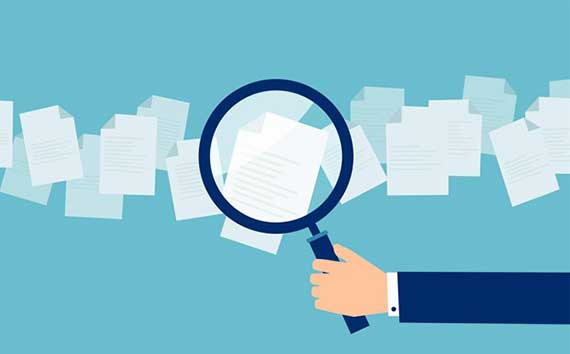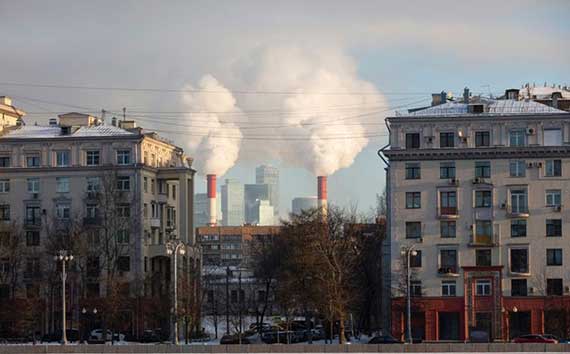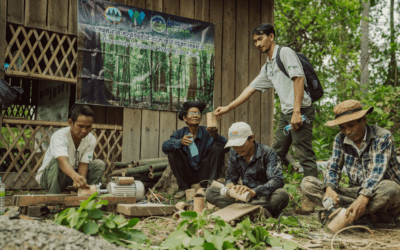Every year, the key decision-makers of the United Nations Framework Convention on Climate Change (UNFCCC) convene an international climate summit known as COP (Conference of the Parties). Article 6 was part of the Paris Agreement, outlined in 2015 at COP22, which was held in France.
The Paris Agreement laid out guidelines for international cooperation to combat climate change and reduce global greenhouse gas (GHG) emissions. Article 6 specifically was designed to set out guidelines for countries to buy and sell carbon in a way that creates meaningful GHG emissions reductions. It’s essentially a rulebook for how carbon is to be traded on the international carbon market.
Article 6 outlines how the carbon trading system can produce economic benefits for participants in the market as well as — more importantly — make meaningful contributions towards sustainability and global emissions reductions. As a means to achieve this, it contains two market-based and one non-market-based approach.
History of Article 6 and Carbon Markets
Since the Kyoto Protocol in 1992, which was the first attempt at creating international standards around contributions to climate change, nations have been able to buy and sell offsets from one another. This was outlined in the Clean Development Mechanism (CDM) in Article 12 of the Kyoto Protocol.
The CDM determined that countries may offset some of their emissions through projects implemented abroad in developing economies. And it established a mechanism for CDM Credits or CERs (certified emission reduction credits equivalent to one tonne of carbon dioxide) to be produced, bought, and sold from these projects.
The CDM mechanism was also designed to support sustainable development, constituting the principal income for the UNFCCC Adaptation Fund, which finances adaptation projects and programmes in developing countries. (CDM projects have focused especially on renewable energy installations in less-developed economies.)
However, due to a lack of specificity and a reluctance by participating countries to make binding commitments, the Paris agreement failed to create the impact it was designed to. A lot of this resulted from omissions and oversights in Article 6. As a result, it was updated after much deliberation in the final hours of COP26, which was hosted in Glasgow, Scotland, in 2021.
The new Article 6 is designed to make it easier for countries to trade carbon offsets or credits (these terms are frequently used interchangeably) in order to remain within their NDCs (Nationally Determined Contributions). NDCs are targets set by individual nations to limit the greenhouse gases they produce to within a certain allowance. The aim is to prevent loopholes and inconsistencies in carbon accounting being exploited, and to support climate finance to developing economies.
Carbon offsets are a means by which organisations can offset their carbon emissions, by purchasing carbon that has been drawn down from the atmosphere or prevented from reaching it.
Offsets may be traded on the compliance market, where organisations buy and sell credits in line with carbon allowances mandated according to a nation’s NDCs. Or they may be traded on the voluntary market, where market participants, largely in the private sector, purchase offsets based on targets they set themselves.
Offsets may come in the form of investment in natural solutions such as forestry projects, or man-made solutions such as direct air carbon capture and sequestration or renewable energy projects.
What Is Article 6 at COP26?
The problem with the version of Article 6 written up at COP22 was that it did not outline clear and stringent enough criteria to ensure that the carbon offset market would have the impact it was designed for. This was down to two principle reasons:
The first was the lack of a universally agreed-upon accounting framework. This makes it difficult to track how much carbon is actually being mitigated and makes it easier for dishonest actors to make carbon reduction claims whilst continuing to emit (which is known as greenwashing). Specifically, it leads to the issue of ‘double-counting’, where the emissions reduction related to one offset or credit is counted against two countries’ climate targets (the buyer and the seller).
The second reason was the lack of quality control around what constitutes a credible offset in the first place. There are various criteria that dictate whether an offset achieves the carbon mitigation claims it is making. The most important of these is ‘additionality’, whereby the offset results in there being less carbon in the atmosphere than if it had never been purchased.
So, for example, I may finance a renewable energy project by purchasing carbon offsets. But if the project was already fully funded, my purchase has not resulted in any further carbon being mitigated, and so I should not be able to use the purchase to offset my own emissions.
The revision of Article 6 at COP26 aims to address these areas, which it does through two small but crucial subclauses: 6.2 and 6.4.
Article 6.2
Article 6.2 aims to make clear which country can claim an offset against its NDCs. It does this by stating that, in order for an offset to be counted, ‘corresponding adjustments’ must be made in the accounting process.
In practice, this means that a carbon offset can only be counted by the country purchasing the offset and not also by the country where the offset is purchased (thereby preventing double-counting).
It thus creates a mechanism for Internationally Transferred Mitigation Outcomes (ITMOs). This is when one country transfers the carbon mitigation achieved by a project inside its borders to a country that has purchased offsets from that project. In doing so, the hope is that investment will flow into the carbon market, facilitating more offsetting projects, higher standards, and ultimately mitigating more emissions.
Article 6.4
6.4 clarifies that in order for a carbon credit to count towards a country’s NDCs, it must be approved by the ‘supervisory body.’ This refers to an official United Nations body which will assess the claims relating to an offset before allowing it to be traded on the international carbon markets as being U.N.-recognised.
This supervisory body therefore essentially acts as a regulator for the international carbon market. Once the U.N. has rubber-stamped a carbon credit, it becomes known as an A6.4 ER (Emission Reduction).
Article 6.4 ERs
Article 6.4 Emissions Reductions are credits that can be traded on the international carbon market following clearance by the U.N. These supersede CERs (Clean Emissions Reductions) or CDM Credits because of the higher standard offsets must now meet to quality under the scheme.
As well as ensuring the use of ‘corresponding adjustments’ in accounting, this is meant to ensure the offsets satisfy various criteria. Most crucially, this includes additionality (as outlined above) and environmental integrity. In practice, environmental integrity means achieving emissions reductions in the host country (where the offset project is/was situated) and delivering meaningful benefits related to climate change.
In theory, then, an offset produced by a project anywhere in the world could be traded on this new market after fulfilling these criteria. Article 6.4 and 6.2 work in tandem. An offset must be properly accounted for, with corresponding adjustments made, and meet certain criteria in order to qualify as an ITMO, after which point it can be traded and used against a nation’s NDCs.
Supporting Climate Finance
The hope is that not only will this new legislation help to ensure that the offset market actually works in combatting climate change, but it will also support the development of climate finance.
Carbon markets have been identified as a key mechanism in sustainable development. A lack of clarity on whether offsets could be reliably used to offset a country’s NDC has so far prevented large-scale investment into offsetting projects from economically developed countries.
Through establishing internationally agreed-upon standards, investment should increase. As a result, a host country will be able to use this increased investment to support its economic development.
Increasing investment in offsets is an essential means of combatting climate change in less economically developed areas of the world. It can help fund renewable energy infrastructure, for example, or protect ecosystems through funding reforestation projects. It’s also essential in addressing the vast inequalities in both the causes and consequences of climate change. It is the emissions of the post-industrial nations that have caused and continue to cause climate change. And it is the developing economies that typically bear the brunt of its consequences. Any feasible climate adaptation strategy must take this into account.
Which Types of Offsets Does Article 6 Cover?
Article 6 is designed to cover every category of offset, from natural to manmade.
In terms of what projects will be funded and which areas the market will grow in, it is currently unclear whether this will include Reducing Emissions from Deforestation and forest Degradation (REDD+) projects, which refer to forest protection and maintenance. This is because, in the case of an offset funding a conservation project, it is more difficult to prove that this has resulted in any additionality (i.e., the carbon may have remained in the ground without the purchase of the offset).
There should, however, be huge growth in the international aviation carbon market, known as Corsia. Because it is a high-emitting industry, airlines are subject to allowances set by national bodies dictating the amount of emissions they can produce. But aviation has traditionally been excluded from trading schemes, due in part to complications around international accounting standards.
Through having clear guidelines around what constitutes a legitimate offset and how these can be traded, airlines will be able to purchase offsets with confidence that they can use these against their allowances.
Historic Emissions
Another key breakthrough of Article 6 was to what extent CERs or CDM credits could be carried forward under the new system and still used by a country against its NDCs. This was a key bone of contention due to countries such as Brazil having a huge inventory of CERs.
The new agreement makes provision for the use of around 300 million CERs to be used towards round one of a country’s NDC, covering emissions from 2020 to 2025 as set out in the Paris Agreement.
How Can Nonmarket Approaches Help?
Of course, to ensure the environmental integrity of the carbon market, nonmarket approaches are also needed.
Whilst the market can be a driver towards higher standards and greater integrity (e.g., because customers want to see that the offsets they are buying meet certain criteria), there must also be nonmarket approaches ensuring the net positive impact of an offset. This is outlined in section 6.8, which essentially encourages cooperative approaches in support of climate adaptation.
As mentioned above, Article 6 also includes nonmarket approaches — i.e., approaches not dependent on financial incentives — in combatting climate change.
The new agreement allocates a 5% share of proceeds from A6.4ERs transfers to be paid to the U.N. adaptation fund, which exists to support adaptation efforts of developing countries to the consequences of climate change.
This represents a more ambitious commitment to acknowledging and addressing the vast inequality relating to the causes and consequences of climate change. Previously, CDM projects redistributed investment to developing economies as part of the U.N. Adaptation Fund, which was financed by a 2% levy on CERs. However, more efforts are likely to be needed in order to truly close this gap.
Article 6: What Are the Issues and Possible Solutions?
 source
source
Despite its best efforts, teething problems remain with the updated Article 6. These problems relate to three interrelated issues:
- Whether ITMOs will reliably bring down emissions globally
- Market access for developing economies
- The fact that accounting standards do not extend to the private sector
In the case of ITMOs, an issue arises where carbon emissions would essentially just be being displaced to the NDCs of the host country. This would mean that any income they earned from offsets would then have to be redirected to producing more offsets! While the hope is that prices on carbon will be sufficient to fund both emissions reductions as well as economic development, currently no such pricing mechanism exists.
Of course, the new standards that an offset must achieve will drive up the price of offsets naturally. Firstly, though, it remains to be seen if they will be driven up enough without further intervention.
Secondly, this leads to a related but separate problem. Meeting these new requirements will require the establishment of expensive new institutions and registries to oversee this process. This is a definite barrier to entry for economies without much disposable wealth that remain unsure of the role they will be able to play in the market.
There are ways around these issues, though. One way — backed by the SBTi (Science Based Targets initiative) — is for organisations to seek to invest in developing economies without claiming these offsets against their own targets. This would allow the country where the offset was produced to claim it against their NDCs and thereby use the investment for other purposes should they desire.
This, in turn, highlights another issue, though. Article 6 only extends to a country’s NDCs. Organisations may continue to claim credits against their targets which do not meet A6.4 ER standards.
Civil society initiatives such as the SBTi are therefore needed to establish best practices and send signals to the market about what standards an offset should meet. However, such initiatives will not be sufficient.
Whether organisations freely choose to support the efforts of developing economies to remain within their NDCs will largely depend on the financial incentive of such investment. If the market finds an equilibrium where actors are willing to pay a price that accurately reflects the cost of carbon, which also leaves a healthy return for the investor (and host country), market mechanisms should ensure that investment flows accordingly.
And if such a practice becomes the industry standard, it will make the carbon market much more attractive for developing economies, thus making it more likely they would invest in the institutional infrastructure required to enter the market.
Another solution to the issues of market access and the genuine additionality of offsets is a totally nonmarket approach, advocated by NGOs and nonprofit organisations, known as Automatic Cancellation.
This is where a certain percentage of an offset sold would simply be cancelled out and not counted towards any country’s NDCs. This would create an inbuilt mechanism whereby at least a portion of offsets was always contributing to global carbon reductions. Automatic cancellation would mean that a country purchasing an offset that mitigated, say, 100 tonnes of carbon emissions, would pay the full price for these 100 tonnes but only be able to claim 80 tonnes of carbon against their balance sheet.
Naturally, support for such nonmarket approaches is not shared by all stakeholders in the carbon market. One example of resistance is from the International Emissions Trading Association (IETA), a subsidiary of the World Bank designed to ‘establish effective market-based trading systems for greenhouse gas (GHG) emissions’. Their stance is that Automatic Cancellation would discourage trading because it would function as an additional tax.
This can in turn be used to argue that Automatic Cancellation directly hampers climate finance because if fewer emissions reductions are traded, there will be less profit left over to finance the Adaptation Fund.
But supporters say that as climate action accelerates, demand is likely to remain relatively high in relation to supply, meaning that the market can sustain artificially increased prices.
That’s a Lot of Information … What Does It All Mean?
Article 6 was designed to facilitate carbon trading which results in genuine environmental, as well as economic, benefits for developing economies. It does this through creating a framework for accurate carbon accounting, as well as a designated international institution/regulatory body designed to ensure the quality and integrity of carbon credits.
Loopholes remain, which mean that these ambitions are far from guaranteed. Much will depend on market-based factors as well as whether new legislation — designed to protect the integrity of offsets — comes in.
The best thing that you can do as a business or individual then is to purchase offsets in both economically developed as well as economically developing countries. The former can be used to offset the carbon that you or your organisation are responsible for. The latter should be viewed as a contribution in the fight against climate change and an investment in our planet’s future.
You can see the various projects we fund at Terrapass and decide which is best for you or your organisation.
Brought to you by terrapass.com
Featured image















